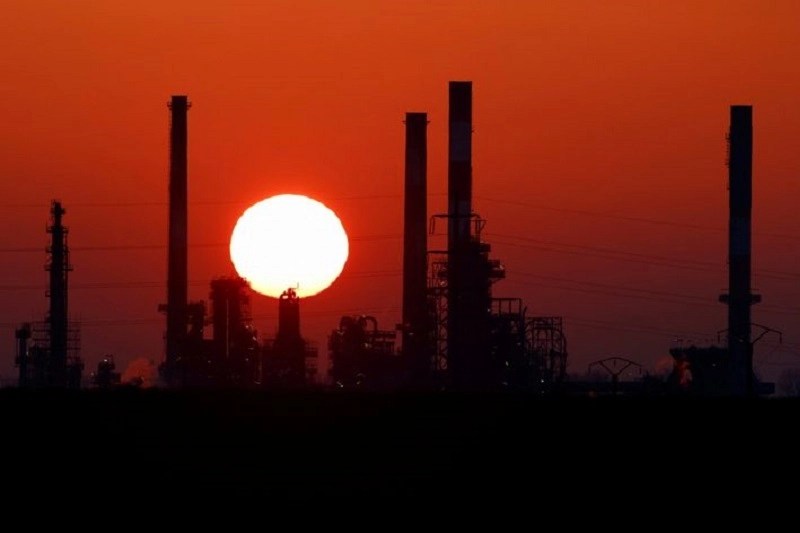
© Reuters
LCO
-1.02%
Add to/Remove from Watchlist
Add to Watchlist
Add Position
Position added successfully to:
Please name your holdings portfolio
Type:
BUY
SELL
Date:
Amount:
Price
Point Value:
Leverage:
1:1
1:10
1:25
1:50
1:100
1:200
1:400
1:500
1:1000
Commission:
Create New Watchlist
Create
Create a new holdings portfolio
Add
Create
+ Add another position
Close
CL
-0.94%
Add to/Remove from Watchlist
Add to Watchlist
Add Position
Position added successfully to:
Please name your holdings portfolio
Type:
BUY
SELL
Date:
Amount:
Price
Point Value:
Leverage:
1:1
1:10
1:25
1:50
1:100
1:200
1:400
1:500
1:1000
Commission:
Create New Watchlist
Create
Create a new holdings portfolio
Add
Create
+ Add another position
Close
As Brent crude oil benchmark approaches the $100 per barrel mark, a new high for 2023 set on Tuesday, worries about a potential U.S. recession and inflationary pressure have been sparked. The Federal Reserve’s efforts to control inflation ahead of its September policy meeting could face hurdles due to rising oil prices.
Historically, surges in energy costs have often been followed by economic downturns in the U.S., as pointed out by Nicholas Colas, co-founder of DataTrek Research. This pattern was evident when oil prices doubled in September 1990, February 2000, and June 2008, leading to either an existing or imminent recession.
However, whether this pattern will persist in the current situation remains uncertain. The U.S. benchmark West Texas Intermediate crude (WTI) was hovering around $70 per barrel in May and June. A surge to $140 per barrel would be necessary to potentially trigger a recession. The highest recent WTI price was $123 per barrel in March 2022 following Russia’s invasion of Ukraine. Therefore, to anticipate a recession within the next year, investors would need to see higher oil prices than those caused by last year’s geopolitical conflict.
Tuesday saw the October delivery of WTI crude fall by 28 cents or 0.3%, settling at $91.20 per barrel on the New York Mercantile Exchange. This followed its highest front-month contract finish since November 7 at $91.48 in the previous session. Meanwhile, November Brent crude slightly declined by 0.1% to settle at $94.34 a barrel on Tuesday after reaching a high of $95.96 on ICE Futures Europe.
Edward Morse, global head of commodity research at Citigroup (NYSE:C) and one of Wall Street’s most bearish oil analysts, has predicted that Brent could momentarily exceed $100 a barrel due to concerns over a supply shortage. This prediction comes amid recent production cuts by Saudi Arabia and Russia, extended until the end of the year, and ongoing geopolitical tensions. However, Morse expects oil prices to fall again next year.
The recent surge in oil prices has raised concerns that it could impede the Federal Reserve’s attempts to reduce inflation as its interest-rate hiking campaign is nearing its conclusion. In the first half of 2023, falling oil prices played a significant role in reducing U.S. inflation.
Neil Shearing, group chief economist at Capital Economics, argues that the idea that higher oil prices pose an inflationary risk in advanced economies can be overstated. If Brent crude remains around $95 per barrel through the end of the year, it will actually slow down headline inflation in developed markets. However, by early 2024, oil could start contributing positively to headline inflation, but other disinflationary factors are likely to outweigh this effect.
In related news, U.S. stocks closed lower on Tuesday as investors awaited the Federal Reserve’s interest-rate decision on Wednesday afternoon. The S&P 500 ended 0.2% lower, while the Dow Jones Industrial Average fell by 0.3% and the Nasdaq Composite declined by 0.2%.
This article was generated with the support of AI and reviewed by an editor. For more information see our T&C.
Source: Investing.com



























